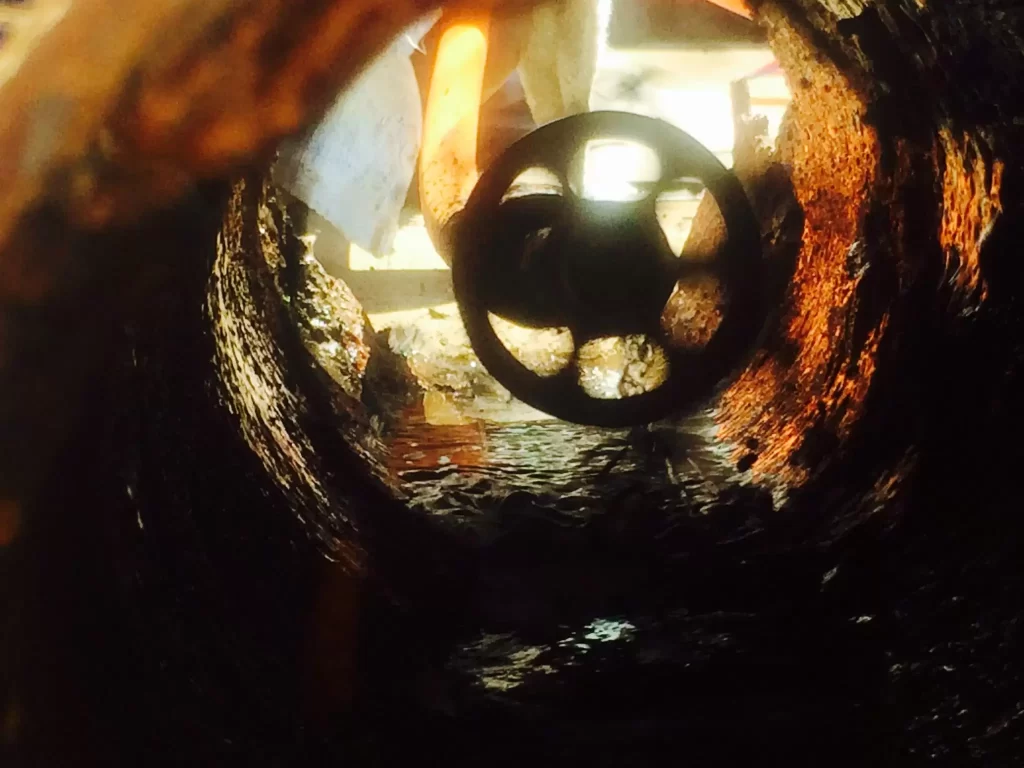Whether you’re new to the pipe lining industry or have been lining for decades, one step towards a successful lining job can be determined by the way in which damaged pipes are cleaned before hand. The United States water infrastructure network is more than 4X as long as the US highway system and with that amount of pipe in the ground, there are bound to be a wide variety of pipe material types. Not all of these pipes clean the same way – that’s why understanding how to specifically clean for different pipe materials can set yourself up for a successful lining job.
Cast Iron or Steel Pipe
Cast iron pipes have the tendency to scale heavily and therefore take a longer time to clean due to removing the scale from the sides of the pipe and also removing the heavy debris knocked off from the bottom of the pipe. If there’s integrity to the pipe, the fastest way to clean is to use a jetter. Using a propulsion nozzle with a narrow-angle can help remove the cast iron debris on the bottom without damaging or descaling the sides of the pipe. Using your inspection camera while jetting can help you look for pipe integrity problems during the cleaning process. Once the debris is removed, using a mechanical spinning head can descale the pipe’s walls.
ABS, PVC, and Copper
These types of pipe usually will need light cleaning or jetting. Clean with a jetter at low pressure, or just rinse the line out before lining. Grease will often stick to plastic pipe and may require a higher pressure of the jetter or mechanical cleaning. On copper pipe, certain brushes can clean the scale off.
Orangeburg
Orangeburg pipe or black pipe is pressed tarpaper pipe. It has the tendency to blister and will need a medium to heavy cleaning to knock down the blisters. While using a cutter go to the far end first and prep your way back to your access point. Pipe integrity is usually very poor in this type of pipe, therefore, holding the liner at a higher pressure will help remove some of the ovality in the original pipe.
Asbestos Concrete
This type of pipe material usually requires minimal prep work. It is a very thin pipe: be sure to not clean in one spot for too long with an aggressive cutter.
Clay
Clay pipe will usually have heavy root infiltration and a number of offsets. This pipe may need anywhere from light to heavy cleaning. Since the pipe is generally thick it can handle this kind of prep work before lining. Be careful not to dislodge broken pieces of clay during the prep because they are usually hard to remove from the pipe.
Whether you’re facing a cracked cast iron sewer pipe, a misaligned clay pipe or PVC knowing the different techniques on how to clean a wide verity of pipes is incredibly important before you start to line the pipe. Set yourself up for success by making sure to identify the pipe material of the damaged or problem pipe before you start the cleaning process.
